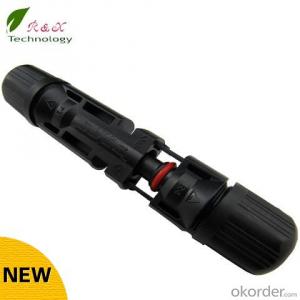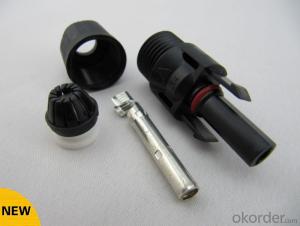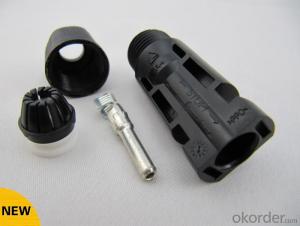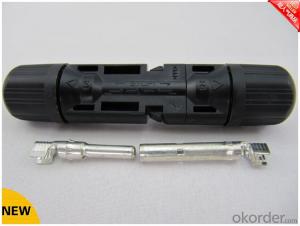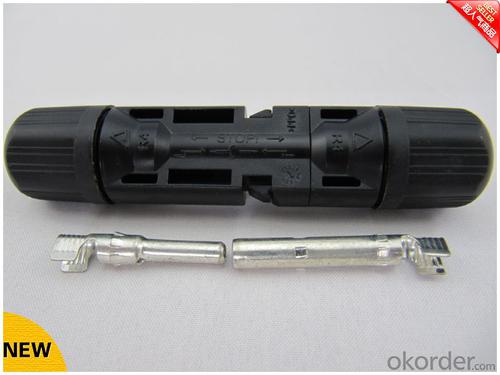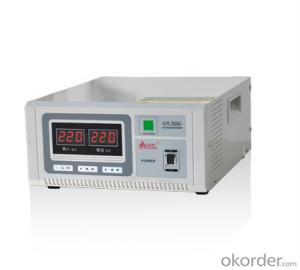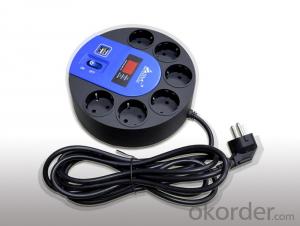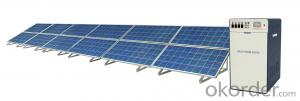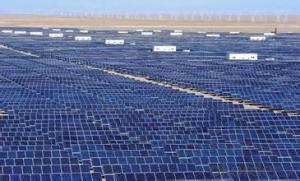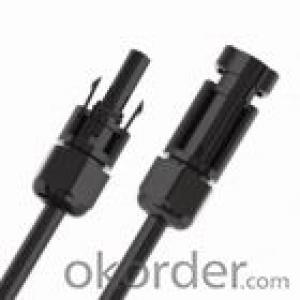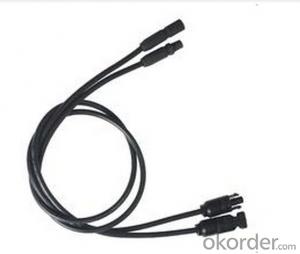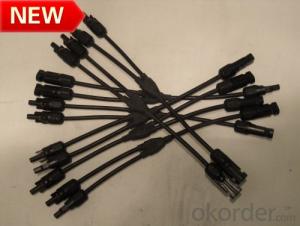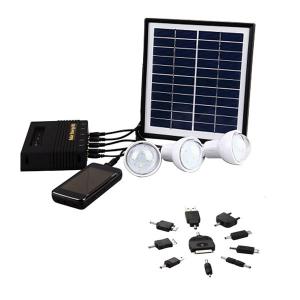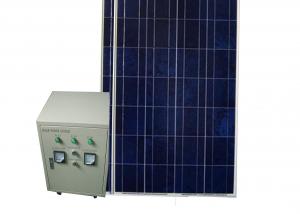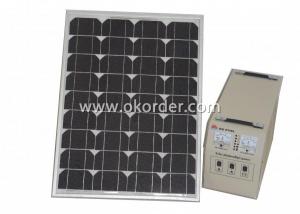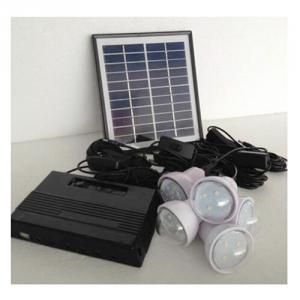MC4 Connector for Solar Energy Systems in New York
- Loading Port:
- Guangzhou
- Payment Terms:
- TT OR LC
- Min Order Qty:
- 100 set
- Supply Capability:
- 50000 set/month
OKorder Service Pledge
OKorder Financial Service
You Might Also Like
Brief introductions of product:
Connector RH4 System for photovoltaic adopts contact and insertion of reed with inner-knob type.It is used with male and famale points.pv junction box and cables made of elastomeric material and makes contact and isertion more certified by IEC61215 and TUV 2PFG1161.
Mainly parameters of product:
Rated voltage 1000V DC
Rated current 30A
Test volaage 6KV(50HZ,1min.)
Ambient temperaure range -40°C...+90°C
Upper limiting temperature 105°C
Degree of protection,mated IP67
unmated IP2X
Contact resistance of plug connectors 0.5m?
Safety class II
Contact system R4 Multilam
Type of termination Crimping
Contact material
Copper,tin plated
Locking system Snap-in(R4)
Cable type PV-F 1169 1*4mm2
1*6mm2
Design paper of product:
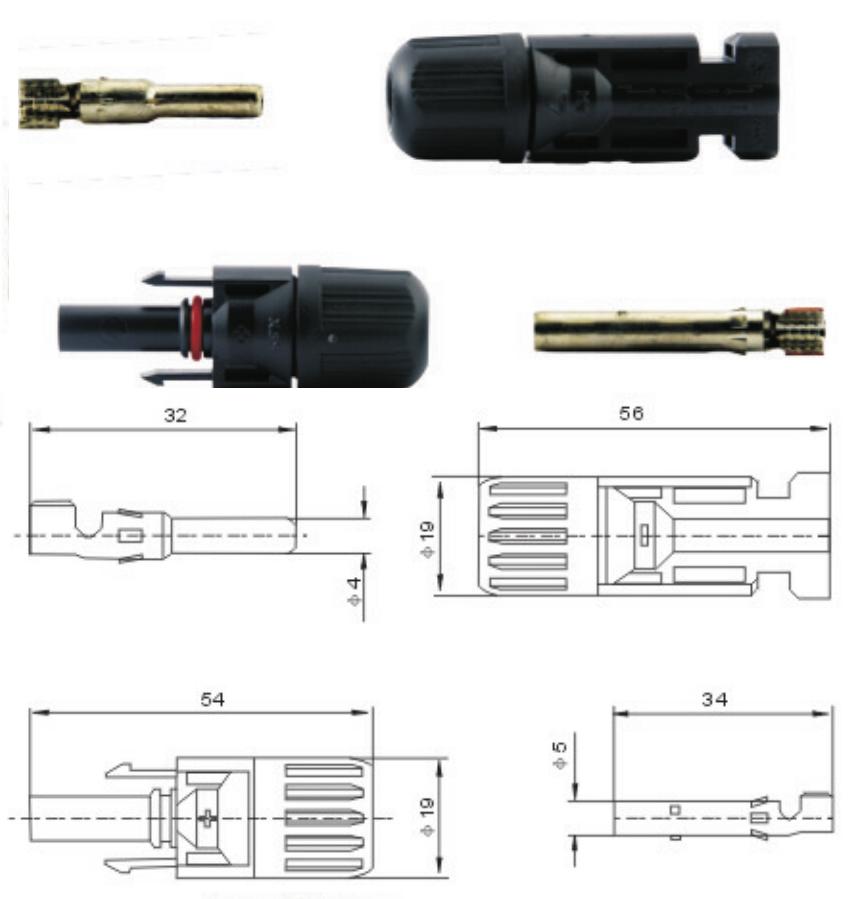
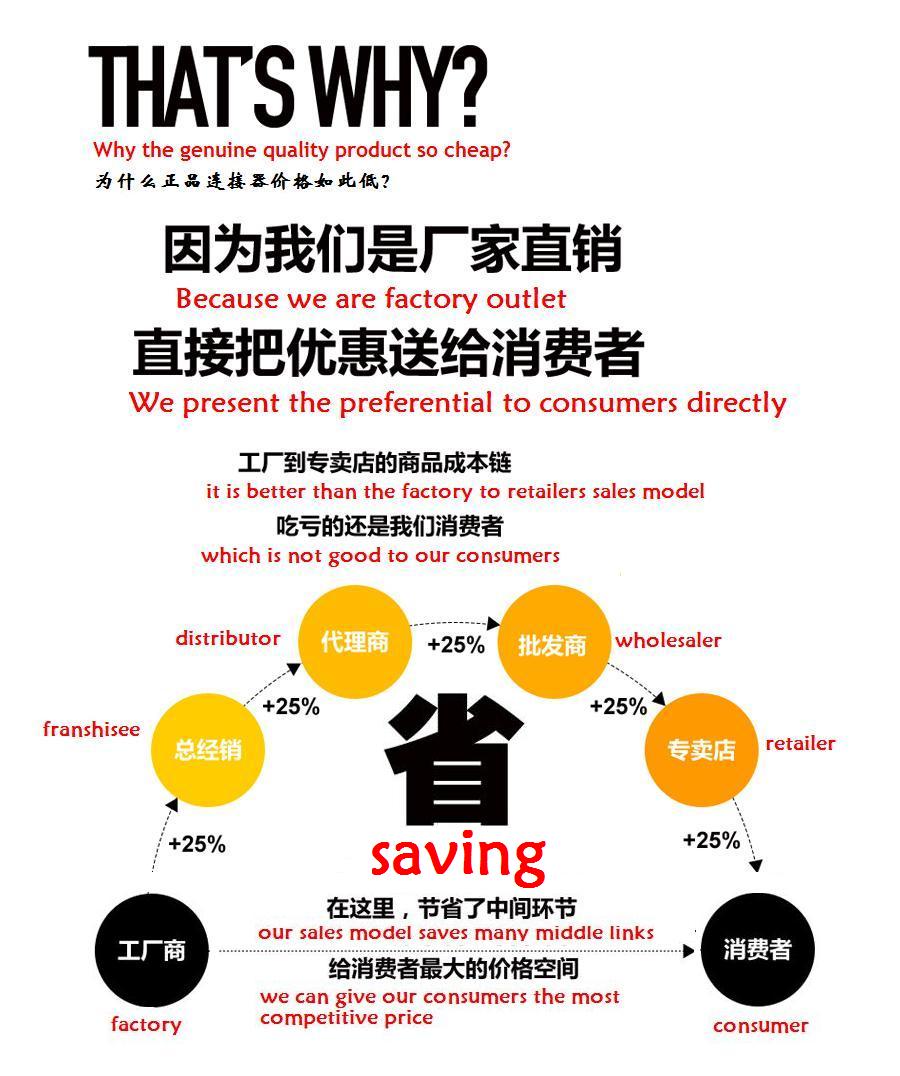
- Q: How does the efficiency of solar panels vary based on the angle and orientation?
- The efficiency of solar panels may vary depending on the angle and orientation they are positioned in. The performance of solar panels can be significantly impacted by the tilt angle at which they are set. It is ideal to position solar panels at an angle that allows them to receive maximum sunlight exposure throughout the day. The highest efficiency of solar panels is achieved when they are oriented perpendicular to the sun's rays. This means that solar panels should directly face the sun without any obstruction or shading. When solar panels are properly angled, they can capture the maximum amount of sunlight, resulting in higher energy production. The orientation of solar panels also plays a vital role in their efficiency. In the Northern Hemisphere, solar panels should generally face south to receive the most sunlight. Facing south allows panels to receive sunlight for the longest duration during the day. However, in the Southern Hemisphere, solar panels should face north for optimal efficiency. Improperly angled or oriented solar panels can experience a decrease in efficiency. If panels are tilted too steeply or too shallow, they may not receive the maximum amount of sunlight. Similarly, if solar panels are not facing the correct direction, they may not efficiently capture sunlight. It is important to note that solar panels can still generate electricity even if they are not perfectly angled or oriented. However, their efficiency will be lower, resulting in a lower energy output. Factors such as temperature, dust, and shading from nearby objects or trees can also affect the efficiency of solar panels. To maximize the efficiency of solar panels, it is advisable to seek professional consultation. Experts can assess the specific location and provide guidance on the optimal angle and orientation for the panels. By ensuring that solar panels are correctly angled and oriented, individuals can maximize energy production and enjoy the benefits of solar power.
- Q: Are there any risks of electrical short circuits with solar energy systems?
- Yes, there are risks of electrical short circuits with solar energy systems. Electrical short circuits can occur due to various factors such as faulty wiring, improper installation, or damaged components. These short circuits can lead to overheating, fire hazards, and potential damage to the solar panels or the entire system. It is crucial to ensure proper installation, regular maintenance, and compliance with electrical safety standards to minimize the risks of short circuits in solar energy systems.
- Q: Can solar panels be installed on carports or parking structures?
- Yes, solar panels can be installed on carports or parking structures. In fact, this has become a popular practice in recent years as it allows for efficient use of space while harnessing solar energy to generate electricity. Installing solar panels on carports or parking structures not only provides shade for vehicles but also contributes to green energy production.
- Q: Can solar energy systems be used in areas with limited access to solar energy education programs?
- Yes, solar energy systems can be used in areas with limited access to solar energy education programs. While education programs can certainly help individuals understand the benefits and usage of solar energy, the physical installation and operation of solar energy systems do not necessarily require extensive education. With proper guidance and assistance from experts or online resources, communities with limited access to solar energy education programs can still successfully adopt and utilize solar energy systems.
- Q: How do solar energy systems impact wildlife?
- Solar energy systems have a generally positive impact on wildlife. Unlike other forms of energy generation, solar systems do not produce harmful emissions or pollutants that can harm wildlife habitats. However, the installation of solar farms may require clearing land, which can disrupt local ecosystems. Additionally, solar panels can create shade, altering the microclimate for certain species. Nevertheless, these impacts are typically minimal and can be mitigated through proper planning and design. In some cases, solar farms can even provide new habitats for certain wildlife species, such as birds or pollinators.
- Q: Can solar energy systems be installed on public buildings or facilities?
- Yes, solar energy systems can be installed on public buildings or facilities. In fact, many governments and municipalities encourage the adoption of renewable energy sources, including solar, in public infrastructure to reduce carbon emissions and promote sustainability. Installing solar panels on public buildings helps generate clean energy, reduce electricity costs, and set an example for the community. Additionally, these installations can often be eligible for various incentive programs and grants, making them a financially viable option.
- Q: Can solar energy be used at night?
- No, solar energy cannot be directly used at night as it relies on sunlight to generate electricity. However, with the help of energy storage systems such as batteries, excess solar energy produced during the day can be stored and used during nighttime hours.
- Q: Can solar energy systems be used in areas with protected wildlife habitats?
- Yes, solar energy systems can be used in areas with protected wildlife habitats. By carefully designing and installing solar panels, it is possible to minimize any potential negative impacts on the environment and wildlife. This can be achieved by considering factors such as panel placement, bird-friendly designs, and ensuring minimal disruption to the surrounding ecosystem. Additionally, solar energy systems offer a sustainable alternative to traditional energy sources, reducing the reliance on fossil fuels and their detrimental effects on wildlife habitats.
- Q: Can solar energy systems be easily expanded or upgraded?
- Yes, solar energy systems can be easily expanded or upgraded. The modular nature of solar panels allows for additional panels to be added to the system, increasing its capacity. Similarly, if more energy is required, additional batteries can be installed to store excess energy. Furthermore, advancements in technology and increasing efficiency of solar panels make it possible to upgrade existing systems with new and more efficient components, improving overall performance.
- Q: Can solar energy systems be used off-grid?
- Yes, solar energy systems can be used off-grid. Off-grid solar systems are designed to generate and store electricity from sunlight, allowing users to power their homes or facilities without relying on the traditional power grid. These systems typically include solar panels, batteries for energy storage, and inverters to convert DC power from the panels into AC power for use. Off-grid solar systems are particularly useful in remote locations or areas with unreliable or no access to electricity, providing a sustainable and independent source of power.
Send your message to us
MC4 Connector for Solar Energy Systems in New York
- Loading Port:
- Guangzhou
- Payment Terms:
- TT OR LC
- Min Order Qty:
- 100 set
- Supply Capability:
- 50000 set/month
OKorder Service Pledge
OKorder Financial Service
Similar products
Hot products
Hot Searches
Related keywords
